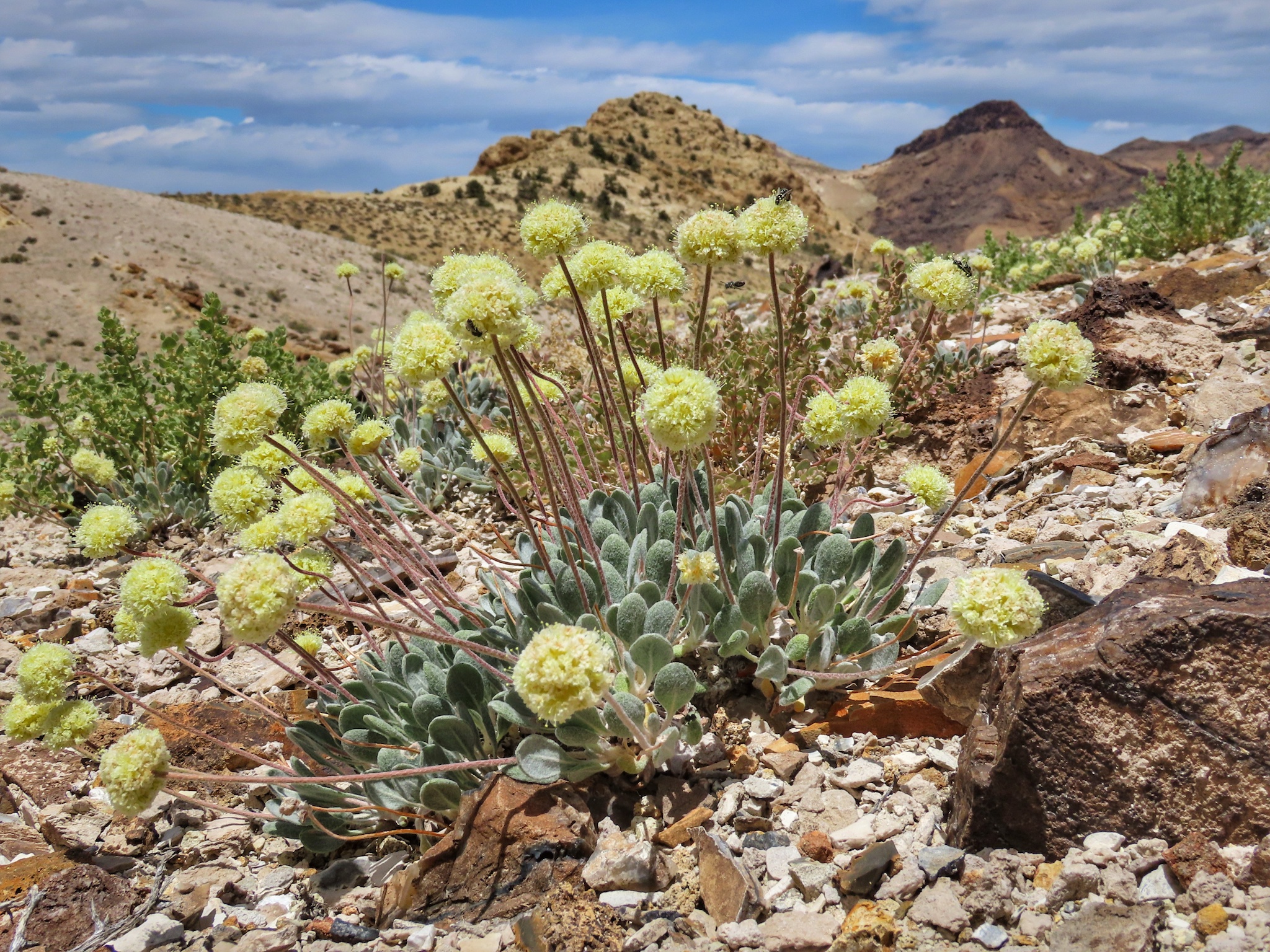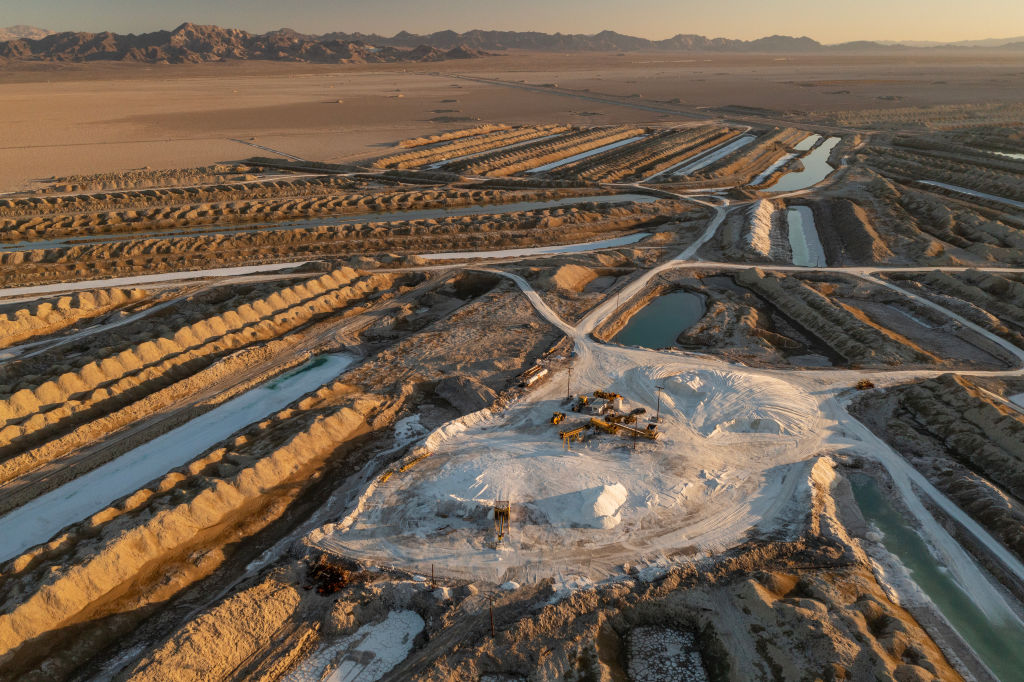
There is so much lithium on Rhyolite Ridge, a plot of land in southwestern Nevada, that Ford, Toyota, and Panasonic have all inked deals to buy it, even though none of the metal has been yet excavated. So much lithium, says Ioneer, the Australian company seeking government approval to mine it that it could supply 370,000 electric vehicles a year, about half the number of total EVs sold in the U.S. in 2022.
So much lithium that in January, the U.S. government loaned $700 million to Ioneer as part of its plan to “supercharge” domestic battery-related mining, processing, and manufacturing and wean the country’s supply chain off of China.
So much lithium that maybe it doesn’t matter that this mine could cause a species to go extinct. After all, in the face of so much lithium, which is needed to power our clean energy future and is in short supply in the U.S., does the extinction of one little desert flower really matter?
The clean energy transition is going to require huge tradeoffs, and the battle gearing up over a tiny flower on Rhyolite Ridge exemplifies one of the decisions countries will face. The U.S. needs domestically sourced lithium and boron, both of which are found in the rich soil of this stretch of Nevada high desert near the border of California, a stone’s throw from Death Valley National Park. The other thing found exclusively in this soil is Tiehm’s buckwheat, a pom-pom of a yellow flower that shoots up on a long, straight stalk and that was listed by the U.S. Fish and Wildlife Service (FWS) as an endangered species in December—which means government agencies have to consult with FWS to ensure that any activities they fund or permit won’t negatively impact the buckwheat’s existence.
More from TIME
Being listed as an endangered species doesn’t necessarily mean that Tiehm’s buckwheat is explicitly useful to humans. The vast majority of Earth’s nearly 8 billion inhabitants would probably not notice if Tiehm’s buckwheat were to simply disappear, like the dodo bird or the St. Helena olive tree before it, another species gone from a planet that keeps on turning. There are, by some estimates, just 26,000 Tiehm’s buckwheat plants left in the world, all in 10 acres of public land of southwestern Nevada. But they do provide a place that bees, wasps, beetles, and flies can visit and potentially feed on.
There are, of course, other flowers that these insects can pollinate, but scientists warn that humans should not just focus on preserving species that have value to humans. Once you become complicit in the extinction of one tiny plant, they say, you become complicit in much more. Which is why they are doing everything they can to stop the progress of what would be only the second operational lithium mine in the U.S., in the name of a relatively anonymous plant.
“I often ask myself, if we are willing to sacrifice Tiehm’s buckwheat, then what else are we willing to sacrifice?” says Naomi Fraga, the director of conservation programs at the California Botanic Garden and one of 102 scientists who signed a February letter to the Bureau of Land Management (BLM) arguing that the current plan for the mine does not adequately protect the species. Allowing an open quarry pit, roads, a work yard, and a storage facility would remove more than one-third of the species’ critical habitat, they argue, introducing dust pollution and potentially spreading invasive plants.
The BLM is in the process of preparing a draft environmental impact statement on the mine, which will likely come out this summer; interested groups will be able to comment and respond to it, and a final version is expected in early 2024, which is also when the U.S. Fish and Wildlife Service will publish its opinion on whether the mine plan will negatively impact the buckwheat.
Ioneer says that a Rhyolite Ridge mine will avoid “all populations” of Tiehm’s buckwheat and that the company will work to minimize impacts to the habitat. A spokesperson says the company has committed to a quarter-mile radius of protected land for Tiehm’s buckwheat, and has hired a full-time botanist to oversee its Rhyolite Ridge plan. Additionally, the spokesperson said in an email that Ioneer has spent $1.5 million so far and is budgeting $1 million annually to conserve the species more broadly, including building a greenhouse in Nevada specifically to grow the buckwheat, and is funding research at the University of Nevada Reno to ensure its success.
But the biologists argue that Ioneer’s plans put the mine within only a few meters of the plants, infringing on the buckwheat’s critical habitat. They propose a one mile buffer around the buckwheat and urge the government to use “the best available science” to ensure that the buckwheat “can continue to survive and thrive in its habitat where it has lived for millenia.”

Already, U.S. courts have indicated that the law may support sacrificing some species for the greater economic good. A U.S. District judge in February denied an emergency injunction that would have blocked a lithium mine in northern Nevada; construction, the court petitioners argued, will rip up a plant that is a critical habitat for sage grouse, an imperiled bird. Miranda Du, the judge ruling on that case, admitted that there was “a tension between the macro environmental benefit that could result from the project and the micro (relatively speaking) environmental harm,” but she still allowed the project to go forward.
Of course, the macro environmental benefit is an economic one, too. The Biden Administration estimates that the global demand for minerals used in EV batteries like lithium and graphite could increase by as much as 4,000% over the next several decades, one reason it is investing heavily in sourcing some of those materials in the U.S. But the U.S. offshored most of its mining decades ago, in part because of the environmental impact, and the process of ramping it back up has proven a slow one.
For non-scientists, even those who are driven strongly by the need to address climate change, biodiversity is often an afterthought. If you believe that without decarbonization, humans can’t survive on the planet, and if you believe that electric vehicles are an important part of decarbonization, the idea that we should protect Tiehm’s buckwheat despite the fact that doing so may slow the green transition might be infuriating.
But, environmentalists say, we don’t know that the extinction of a species, even one as small as the Tiehm’s buckwheat, will not cause a larger environmental harm. “It’s been likened to a Jenga tower—you don’t know until after you’ve removed a piece that the entire system collapses,” says Patrick Donnelly, the Nevada director of the Center for Biological Diversity, the nonprofit that has raised many of the legal challenges to the Ioneer mine.
Today, the rate of extinction is estimated to be about a thousand times what it should be under natural selection—reason enough, scientists say, to prioritize biodiversity even if species don’t have any apparent value to humans. There may be important benefits to species that we don’t know about yet—in the 1960s, for example, scientists discovered that a periwinkle from Madagascar could help fight cancer, but it easily could have gone extinct before this discovery. And even if Tiehm’s buckwheat has no utilitarian value to people, “protecting biodiversity is important to people, regardless of whether species are useful to us in direct ways,” says Leif Richardson, a conservation biologist with the Xerces Society for Invertebrate Conservation.
It’s extremely rare for FWS to issue an opinion saying that a project will have a negative impact on an endangered species, says Donnelly, of the Center for Biological Diversity. That said, he believes it is likely that Ioneer will work with BLM and FWS to make changes to the mine plan such that it will be able to move forward.
But the better solution, Donnelly and others argue, is simple: get lithium from somewhere else. The problem is, the other lithium sites are facing opposition from locals and environmentalists, too. “Thacker Pass is one of few places left where you can experience deep quiet and dark skies with amazing views of the stars and the milky way. The mine project will destroy that,” the group, Protect Thacker Pass, says in opposition to a lithium mine on the Oregon-Nevada border. “We have enough around here that’s toxic already,” an opponent to a proposed lithium mine in North Carolina told NPR. And a legislator in Maine presented a bill that would place a five-year moratorium on lithium mining in Maine, where experts say there are millions of tons of ore available. “We must examine the risks of lithium mining,” the legislator, Margaret O’Neil said when introducing her bill, “and consider whether the benefits of mining here in Maine justify the harms.”
Correction, April 28
The original version of this story mischaracterized Patrick Donnelly’s prediction about the planned Ioneer mine. He believes the project will go forward with modifications to better protect the Tiehm’s buckwheat, not in its current form. The story has also been updated to include additional information about Ioneer’s plans to protect the plant.
More Must-Reads from TIME
- Donald Trump Is TIME's 2024 Person of the Year
- Why We Chose Trump as Person of the Year
- Is Intermittent Fasting Good or Bad for You?
- The 100 Must-Read Books of 2024
- The 20 Best Christmas TV Episodes
- Column: If Optimism Feels Ridiculous Now, Try Hope
- The Future of Climate Action Is Trade Policy
- Merle Bombardieri Is Helping People Make the Baby Decision
Contact us at letters@time.com